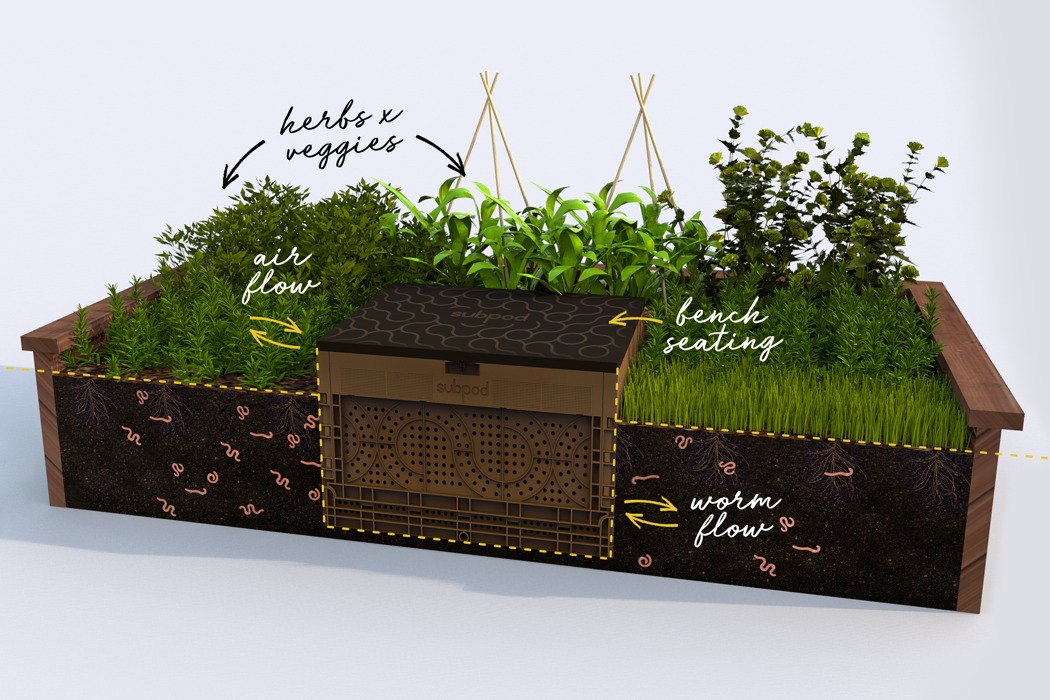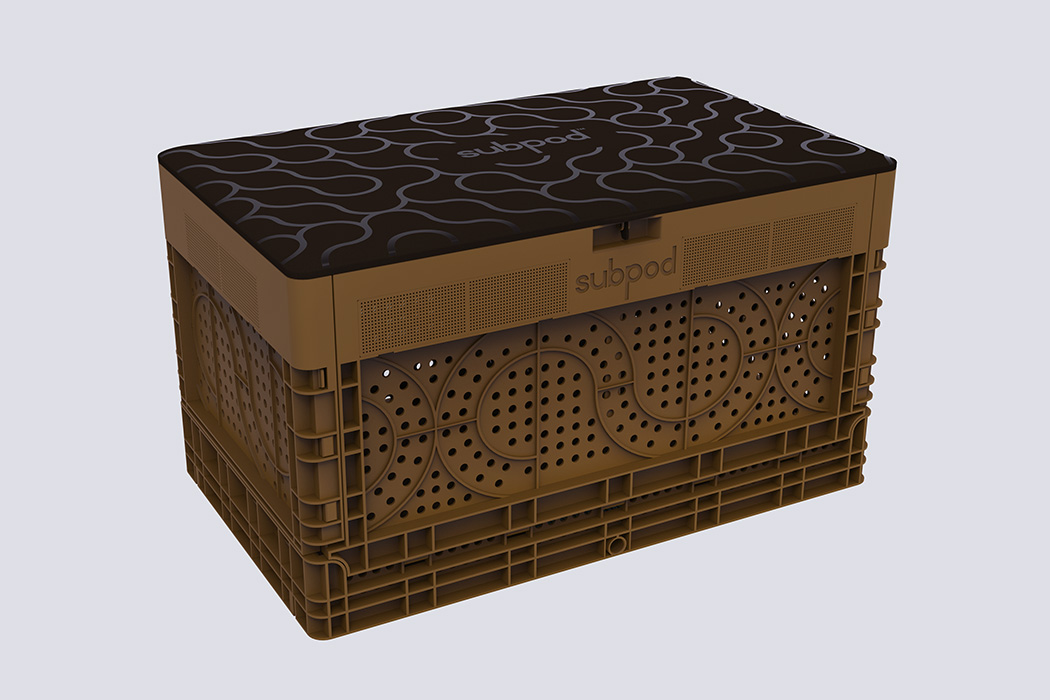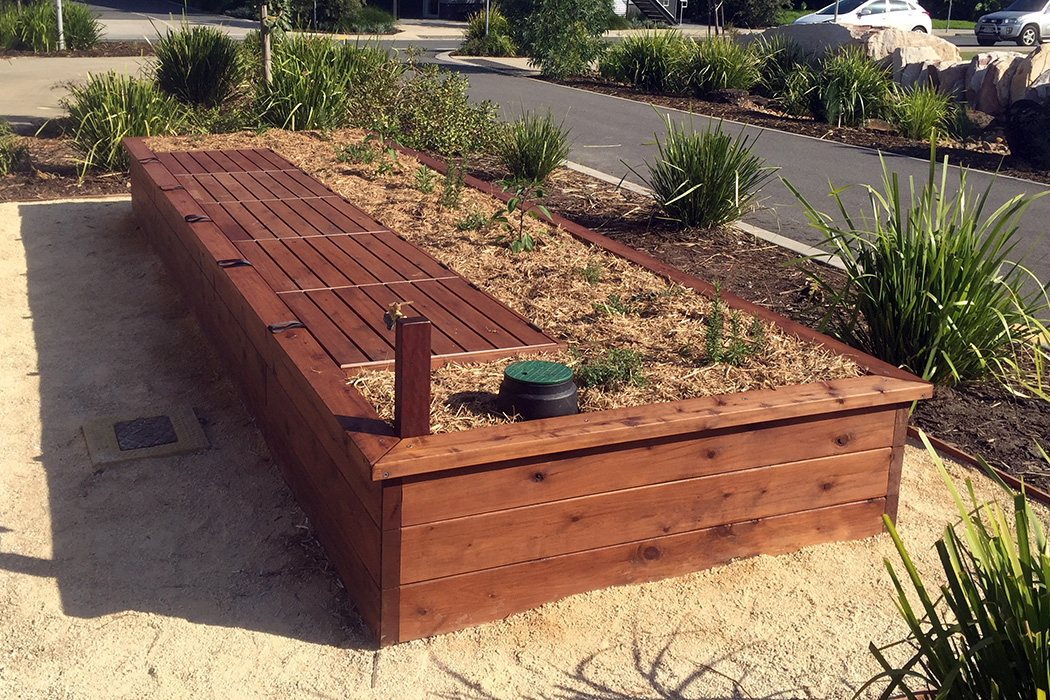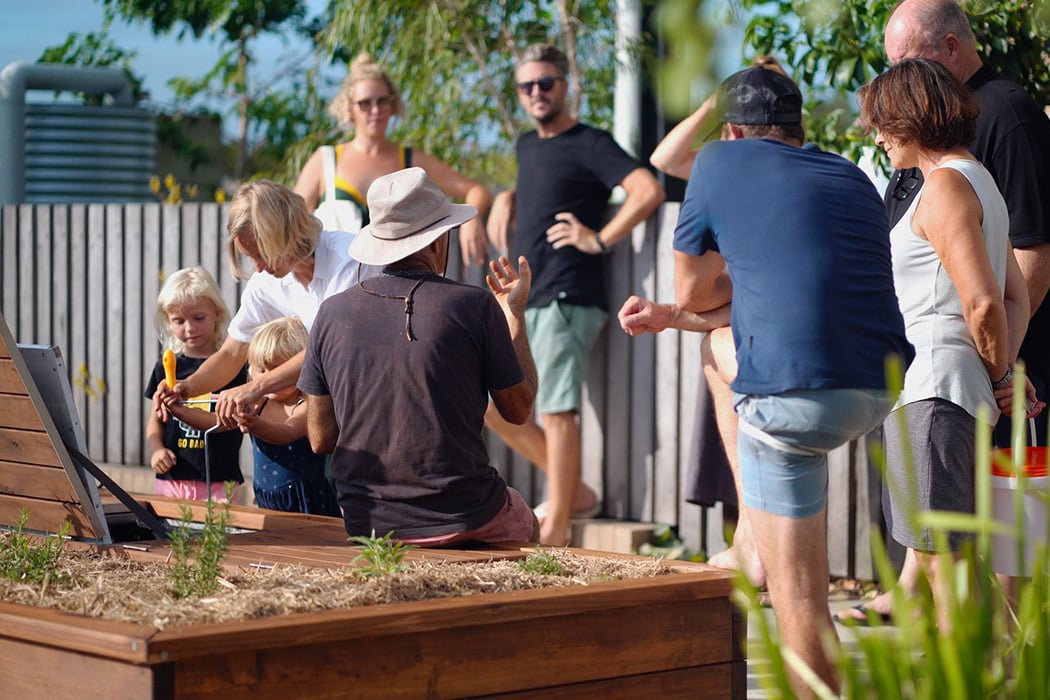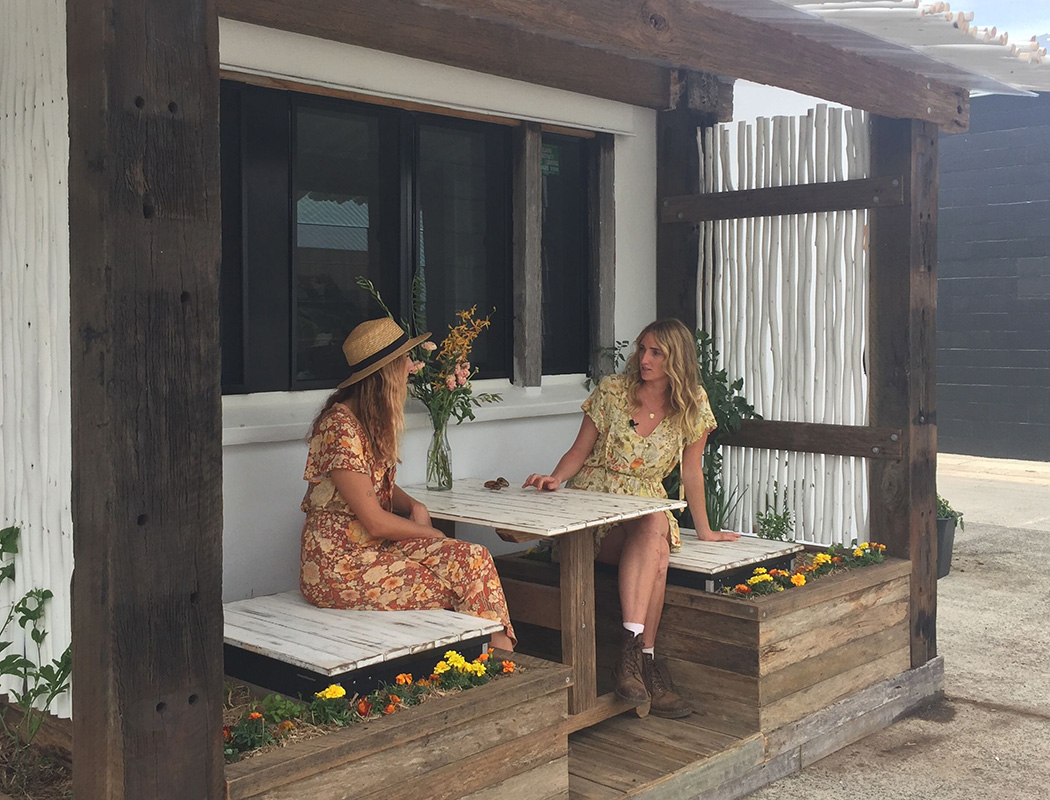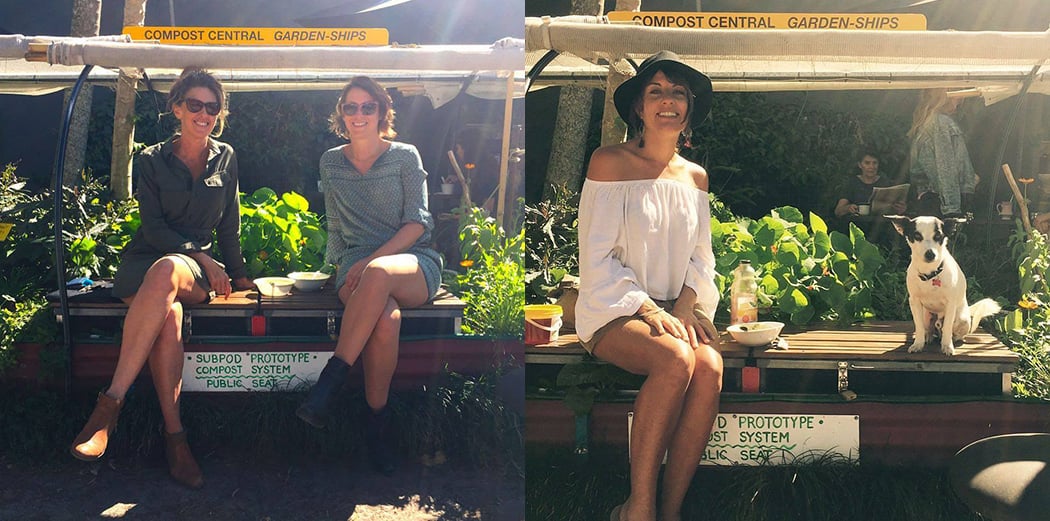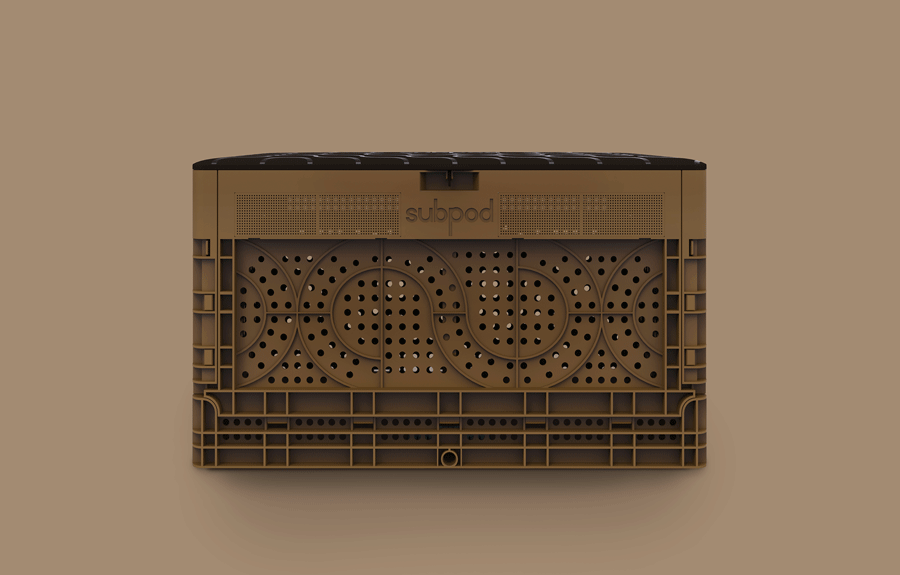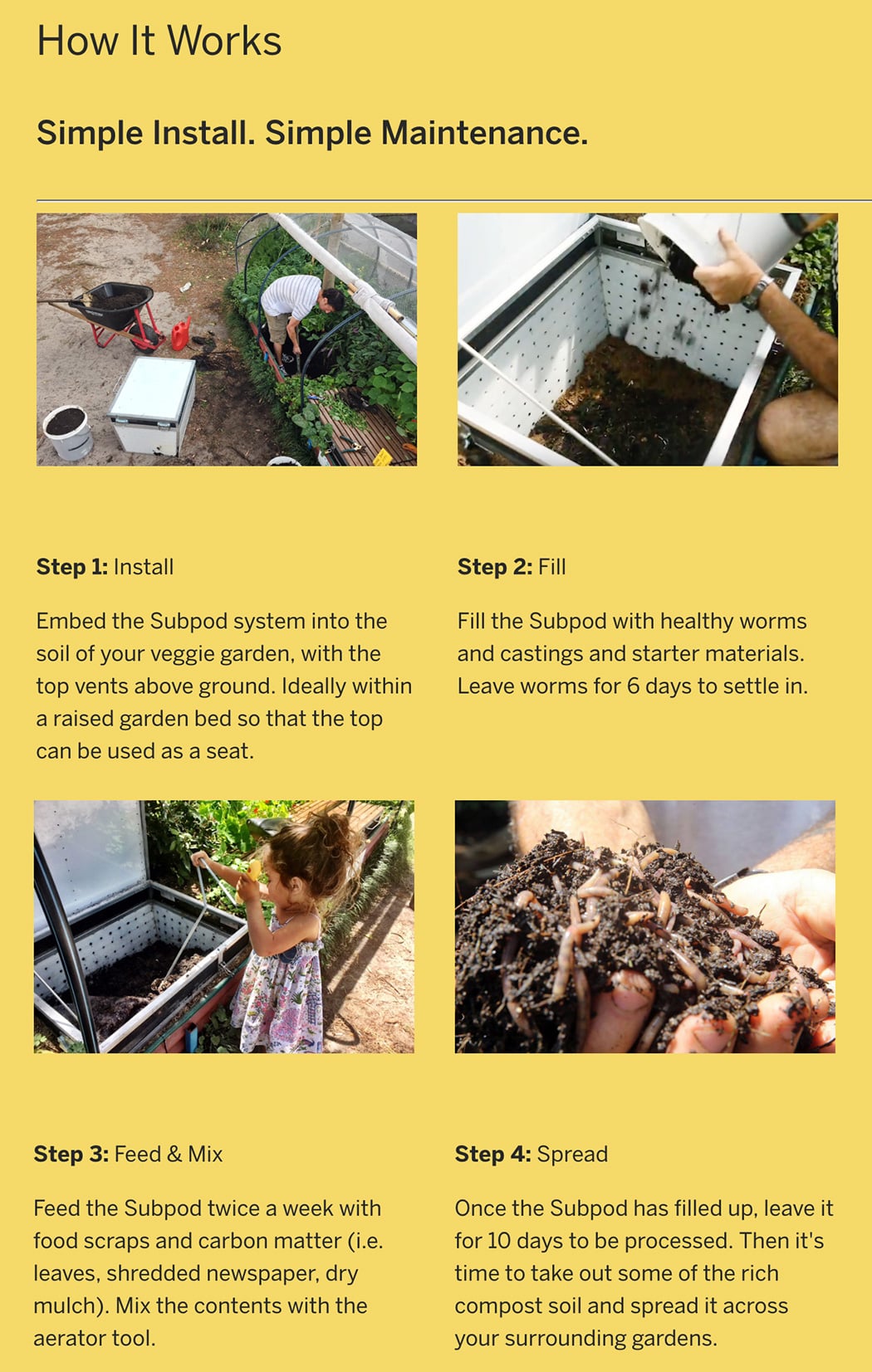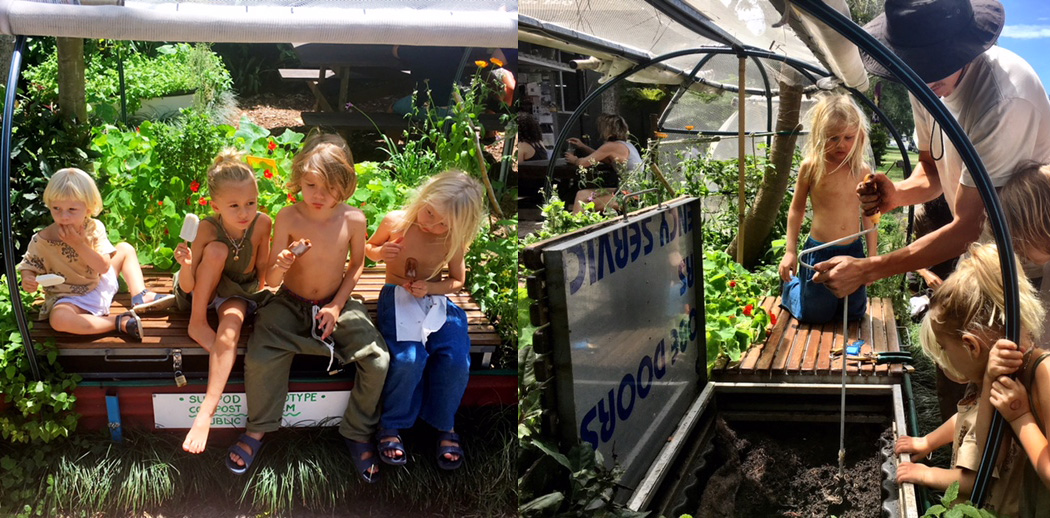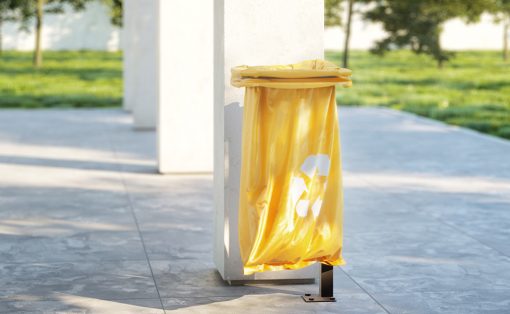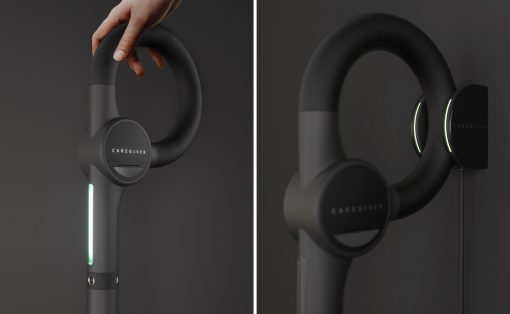Earth. We’ve literally named our planet after the soil beneath us (even though the 75% of the planet’s surface area is water), yet with time, urbanization, pollution, and climate change, the very soil that nourishes us is slowly being killed, robbed of its nourishing properties. However, with a clever allocation of already existing resources, the guys behind Subpod believe they can reverse this process of soil degradation.
The Subpod is a composting unit that sits within the ground, unlike most compost heaps that exist independent of the soil. It relies on two important, yet easily available resources. Earthworms, to help break down matter and create the compost, and food waste, something that this planet has an abundance of, but no place to put it. The Subpod’s neat, collapsible design comes flat-packed, and opens out to become a container/crate that sits half inside the soil. The lid (which also serves as seating) opens up to reveal a spacious interior with perforated walls. All you do is dump food waste along with carbon-matter (dried leaves or shredded newspaper) into the Subpod, introduce the earthworms to the mix, and close the seat-lid. “Feed” the Subpod once every 3-4 days and the earthworms get to action, breaking down the food and dried elements to create a nutrient-rich compost in just 10 days. Use the compost you create to grow plants around the Subpod and you immediately notice how healthy the soil and the plants that grow on it are. This is thanks to the perforations on the side of the Subpod that allow the earthworms to travel in and out of the compost crate, feeding themselves, creating compost, aerating the soil, and maintaining soil and plant health.
A lot of stuff happens under the Subpod’s hood. Its integration into the ground allows the worms to repair the soil, as well as maintain stable temperatures required for compost creation. The Subpod works without any extra intervention or energy, outwardly looking just like a wonderfully rustic seat that gives you the ability to admire the plants that are growing around you. Inventor of the Subpod Andrew Hayim De Vries was astonished by how many tonnes of untreated food waste go into landfills, harming the soil by introducing unwanted chemicals into it. The design of the Subpod prompts you to, instead of throwing your food into the trash, take it and convert it into fertilizer that saves you money, helps you grow great produce (you can even sell your own compost to nearby farmers, helping them ditch synthetic fertilizers), and eventually helps the soil beneath your feet become healthy again… one Subpod at a time!
Designers: Andrew Hayim De Vries & Phil Johnson
Click Here to Buy Now: $99 $119 (16% off).
Meet Subpod. The world’s first modular in-garden composting system that turns food waste into soil food with no smells or mess. It’s simple to use and takes the hard work out of composting.
Designed for strength and durability, you can even use a Subpod as seating in your raised garden. Subpod packs flat for easy shipping worldwide and can be assembled with no tools in under 3 minutes.
From a single household to an entire residential community, Subpod can scale to suit your needs.
The efficient, low-maintenance and odor-free composting system powered by worms and microbes. Composting your food waste has never been this simple.
The Subpod not only disposes of your organic waste, but is also the ‘growth hub’ for your garden. The movement of worms and microbes between your Subpod and garden bed builds soil fertility and plant health, allowing you to grow nutrient-dense food at home with ease.
Subpod doubles as a sturdy bench seat. So, once you’ve fed the worms, have a seat in your garden, and reconnect with your herbs and veggies.
Stable & Effective Composting – Going below ground means we’re feeding the plants at the root level, where they draw in their nutrients. Using nothing but worms and microbes, this natural process aerates the soil and adds good bacteria throughout your garden.
The unique series of holes beneath the soil allow worms and microbes to freely move to and from the system and the surrounding garden bed. And the best part is, your herbs and vegetables are being fed in a really natural way, every day – reducing the need for other fertilizers.
Permaculture expert, Geoff Lawton of Permaculture Research Institute shows how the Subpod works on his property, Zaytuna Farm.
Convert Waste to Food – You can finally start composting your own waste and growing your own food at your home or workplace with more ease. As Subpod is embedded right in your growing garden, it helps feed and boost your herbs and vegetables on a daily basis. The worms feed and then transverse out through the soil, excreting natural fertilizers and aerating it, all at the plant root level.
The team has designed an internal divider which slides in to create sections with the Subpod. This allows you to compost your waste more effectively, allowing one side to be filled with new food waste, whilst the other could be harvested, essentially worm-free. The worms will move to where the food is, or away from something that needs to de-gas, such as onions.
It would also suit composting a smaller amount of food waste more efficiently, which would be suitable for an individual, a couple, or those producing less waste. You can lock the Subpod if it’s in a community garden or shared space, and you can collect the worm tea via a built in drain pipe (BYO hose), which has an internal filter and can be plumbed around your garden.
Click Here to Buy Now: $99 $119 (16% off).

